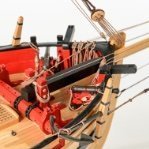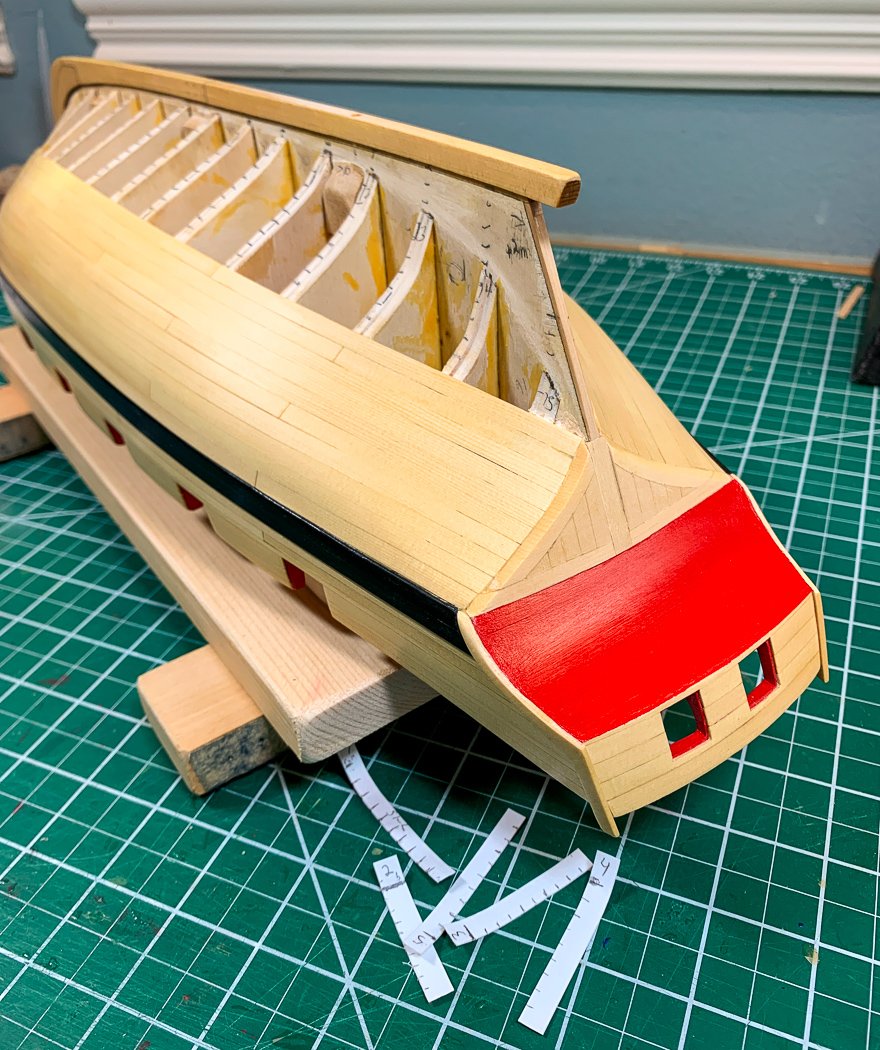-
Posts
4,101 -
Joined
-
Last visited
Content Type
Profiles
Forums
Gallery
Events
Everything posted by glbarlow
-
I really hate that I’m now going to have to buy a lathe.... Beautiful, next level work as usual...and excellent tutorial to add to bookmarked pages.
- 725 replies
-
- vanguard models
- speedy
-
(and 1 more)
Tagged with:
-

Byrne's saw accessories question..
glbarlow replied to CPDDET's topic in Modeling tools and Workshop Equipment
This is all it takes to prevent kickbacks in my experience, that and a side block to keep it tight to the side and a push stick to move it past the blade. -
Ingenious! If I may ask, how do you keep the moulding strip from sliding in the grove as it’s being milled
- 589 replies
-
- le gros ventre
- cargo
-
(and 1 more)
Tagged with:
-
Being a good modeler is knowing and being willing to take apart a mistake and do it over. Based on that axiom I’m a really good modeler Being a great modeler is not making the mistake in the first place. I am not great 🤣😂
- 221 replies
-
- queen anne barge
- Syren Ship Model Company
-
(and 1 more)
Tagged with:
-
Nothing wrong with yours. I’d recommend getting the fashion pieces right and trimmed to the bottom of the wales. Seems like you have plenty of wood to do a little more sanding. Aside from that it looks great. Your square tuck is very well done. I know how hard that is.
- 778 replies
-
- cheerful
- Syren Ship Model Company
-
(and 1 more)
Tagged with:
-
I've started lining the lower planking belt. It is a chore but so worth the effort once the planking starts. I also use the plans to add a vertical hashmark where the plank joints are so I remember to cut the planks the proper lengths. Really though I just wanted to share a photo of my ***RED*** counter. For Cheerful I wanted to go RED or go home, I think I'm successful. I've never used anything but Admiralty Paints Red Ochre, this Golden Medium Cadium Red makes a statement. 😄 Of course I've already painted the gun ports a long while ago, but the counter really pops against the gold of the Alaskan Cedar. (five thin coats in case you're wondering).
- 778 replies
-
- cheerful
- Syren Ship Model Company
-
(and 1 more)
Tagged with:
-
Haven't really used them yet, no rigging or small hands work with where I am on Cheerful. It does look very solid and better than the little extra hands thing I've used for years.
- 725 replies
-
- vanguard models
- speedy
-
(and 1 more)
Tagged with:
-
I went for the 4 hands version, I’ve never needed more than 3 plus I thought the 6x9 inch base would fit better on mu bench. I was hesitant until Derek assured me of the strength of the magnets to the base. i need to stop reading these forums, I learn about too many great tools that I can’t resist. Amazon just makes it all too easy.
- 725 replies
-
- vanguard models
- speedy
-
(and 1 more)
Tagged with:
-
Great and creative display for your excellent barge. If this is your first model, we’ll all look forward to more great build logs!
- 103 replies
-
- queen anne barge
- Syren Ship Model Company
-
(and 1 more)
Tagged with:
-
My mistake, it was the USS Kidd in Baton Rouge. There were 4-5 destroyers named Bainbridge including the first one in 1903 and a current Arleigh Burke class but apparently not in the movie Greyhound.
-
I watched it on my 85 inch TV using Amazon Fire Stick and the Apple TV app. Apple TV is not limited to a computer.
-
I read the book after seeing the movie, I found it tedious. The movie is 98 minutes of action, the book dwelled on and on and on about inner thoughts. I'm generally a fan of the book over the movie and of Forrester's books - not this time.
-
Not the best example but as a photographer I know that photos used for trailer or magazine covers are often reversed just to accommodate the text placement - someone should have noticed the reversed letters on the helmet, that could have been easily reversed back.
About us
Modelshipworld - Advancing Ship Modeling through Research
SSL Secured
Your security is important for us so this Website is SSL-Secured
NRG Mailing Address
Nautical Research Guild
237 South Lincoln Street
Westmont IL, 60559-1917
Model Ship World ® and the MSW logo are Registered Trademarks, and belong to the Nautical Research Guild (United States Patent and Trademark Office: No. 6,929,264 & No. 6,929,274, registered Dec. 20, 2022)
Helpful Links
About the NRG
If you enjoy building ship models that are historically accurate as well as beautiful, then The Nautical Research Guild (NRG) is just right for you.
The Guild is a non-profit educational organization whose mission is to “Advance Ship Modeling Through Research”. We provide support to our members in their efforts to raise the quality of their model ships.
The Nautical Research Guild has published our world-renowned quarterly magazine, The Nautical Research Journal, since 1955. The pages of the Journal are full of articles by accomplished ship modelers who show you how they create those exquisite details on their models, and by maritime historians who show you the correct details to build. The Journal is available in both print and digital editions. Go to the NRG web site (www.thenrg.org) to download a complimentary digital copy of the Journal. The NRG also publishes plan sets, books and compilations of back issues of the Journal and the former Ships in Scale and Model Ship Builder magazines.



